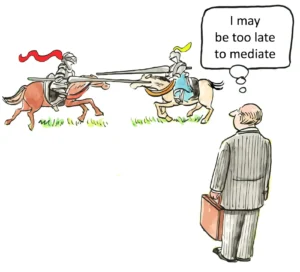Top Reasons Florida No-Fault Laws Influence Your Ocala Car Crash Claim
Florida roads see heavy traffic and sudden hazards, and Ocala drivers experience their share of collisions on local highways and neighborhood streets. Crash victims often feel overwhelmed immediately after an impact because they face medical appointments, vehicle repairs, and insurance deadlines at the same time. Florida’s no-fault laws shape every claim in this region, so a detailed understanding helps injured drivers protect their rights from the first day.
Victims often look for reliable guidance early in the process. In many situations, an Ocala car accident lawyer can help victims understand the structure of no-fault rules and the evidence needed to strengthen a claim. Florida follows a specific system that governs how people recover compensation, who pays first, and when victims can step outside no-fault restrictions. Learning how these rules apply in practical scenarios helps injured residents make informed decisions.
No-Fault Coverage Determines Your First Source of Benefits
Florida drivers must maintain Personal Injury Protection (PIP). This coverage pays medical costs and part of a victim’s lost income after a crash, regardless of which driver caused the collision. Victims cannot delay using their own coverage because the law requires them to pursue these benefits before seeking recovery from the other driver’s insurer.
PIP rules encourage quick medical care, so victims need to visit a qualified provider within a short time after the crash. Medical records play a crucial role in verifying injuries and establishing the link between the collision and the victim’s condition. People who postpone treatment often struggle to secure full benefits because insurers question whether the crash caused the injuries.
Limited Compensation Under PIP Affects Long-Term Recovery
PIP benefits offer necessary early support, but they only cover a percentage of medical expenses and lost wages. Many victims experience injuries that exceed this coverage, especially when collisions involve multiple impacts, spinal trauma, or long periods away from work. The limited nature of these benefits prompts victims to consider additional legal options when their losses continue to grow.
PIP also does not compensate victims for pain, suffering, or diminished quality of life. Drivers who deal with chronic discomfort or emotional strain often need avenues beyond PIP to address the full impact of the collision. Understanding these financial limits helps victims plan their next steps strategically.
Injury Severity Threshold Decides Whether You Can File a Liability Claim
Florida’s fault law restricts lawsuits unless the victim meets a specific injury threshold. Permanent injuries, significant loss of bodily function, or severe scarring often qualify. When victims reach this level of harm, they can pursue compensation from the at-fault driver’s insurance for damages that PIP does not cover.
Documented medical evaluations support these claims. Independent specialists often assess long-term consequences, especially when the victim experiences ongoing pain or limited mobility. Thorough records help establish that the injuries meet Florida’s legal standard, which opens the door to broader financial recovery.
Insurance Company Tactics Influence Claim Outcomes
Insurance adjusters evaluate PIP and liability claims quickly because Florida’s laws encourage fast processing. Adjusters often look for inconsistencies, gaps in treatment, or statements that appear to shift responsibility away from the other driver. Victims gain leverage when they keep detailed records of doctor visits, accident scene conditions, and conversations with adjusters.
Clear communication strengthens claims. Victims should avoid speculation during calls with insurers and maintain copies of all documents related to the crash. These steps reduce misunderstandings and help victims counter arguments that attempt to limit compensation.
Evidence Collection Plays a Major Role in No-Fault and Liability Claims
Even though PIP does not depend on fault, strong evidence still helps victims secure timely benefits. Photographs, medical evaluations, repair invoices, witness statements, and police reports all contribute to a complete file. Comprehensive evidence makes it easier to transition into a liability claim if the injury threshold is met.
Victims should also evaluate the crash scene conditions, including traffic patterns, weather, and roadway design. These details often strengthen arguments regarding driver negligence, especially in intersections or in congested areas of Ocala.
Understanding Coverage Layers Helps You Protect Your Finances
Florida drivers often carry several types of insurance, and each plays a unique role after a crash. PIP handles immediate injuries. Property Damage Liability covers repairs to the other driver’s vehicle. Bodily Injury Liability, when available, offers compensation if the victim meets the threshold to pursue a claim. Some drivers also add uninsured and underinsured motorist coverage for additional security.
Knowing how each policy functions helps victims avoid delays and ensures they contact the correct insurer for each part of the claim. In complex collisions involving multiple vehicles, layered coverage can become critical.
Essential Insights to Navigate Ocala Car Crash Claims Under No-Fault Rules
Florida’s no-fault system creates a structured path for compensation, but it also introduces deadlines, coverage limits, and injury thresholds that influence every claim. Victims benefit from understanding how their actions, documentation, and medical care affect the outcome. If you need help with another article or want deeper detail, I can create that next.













